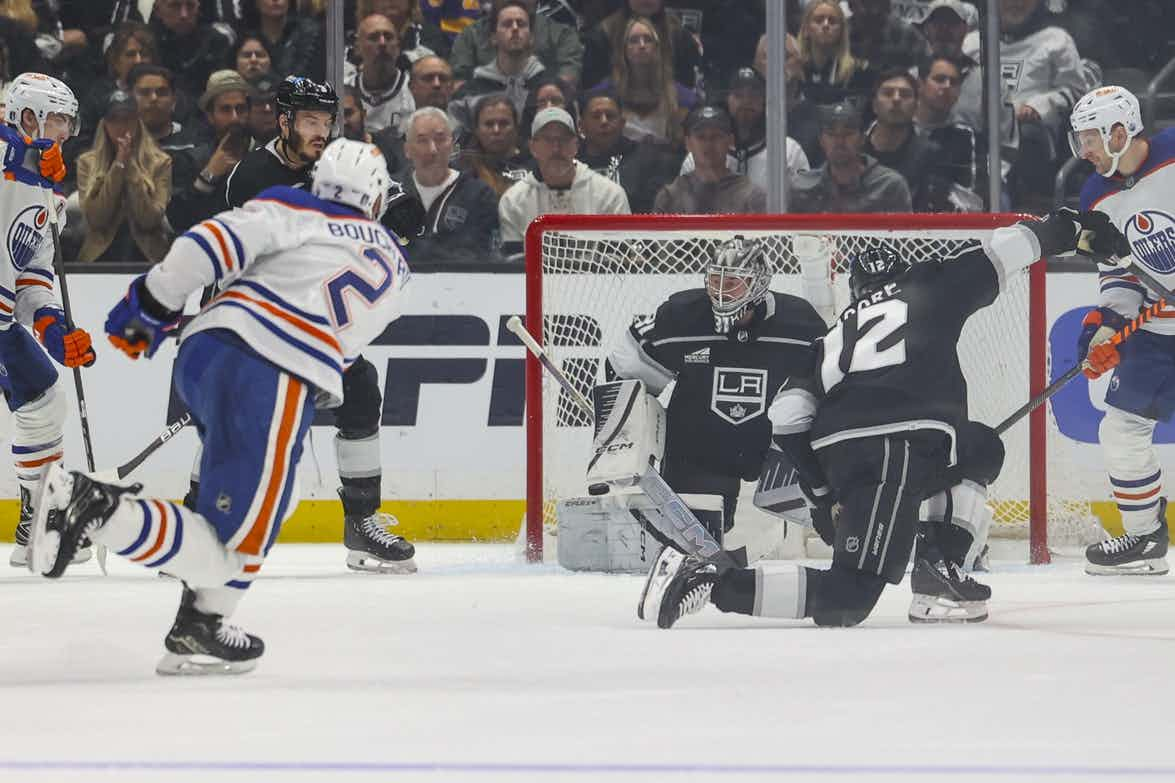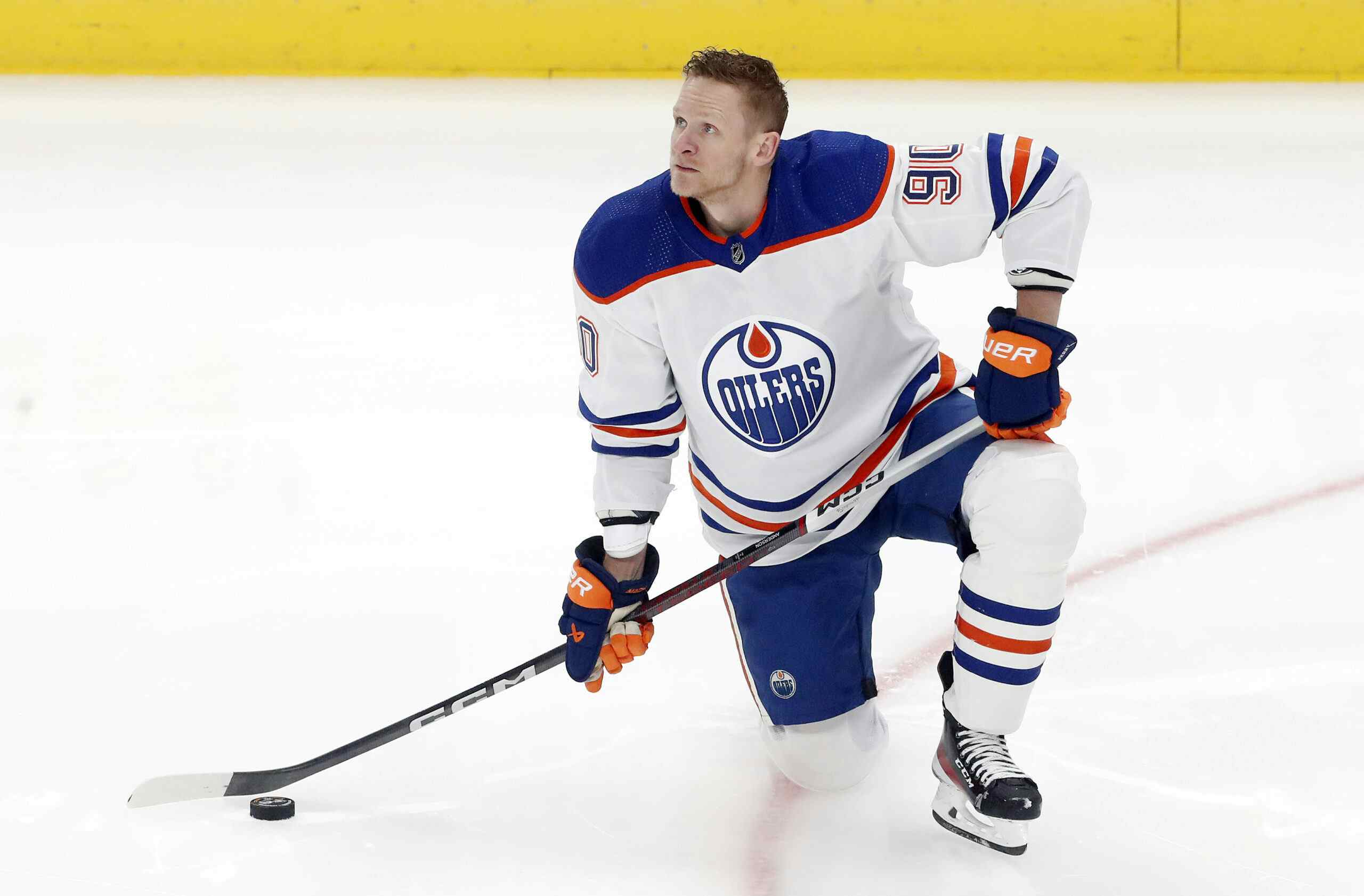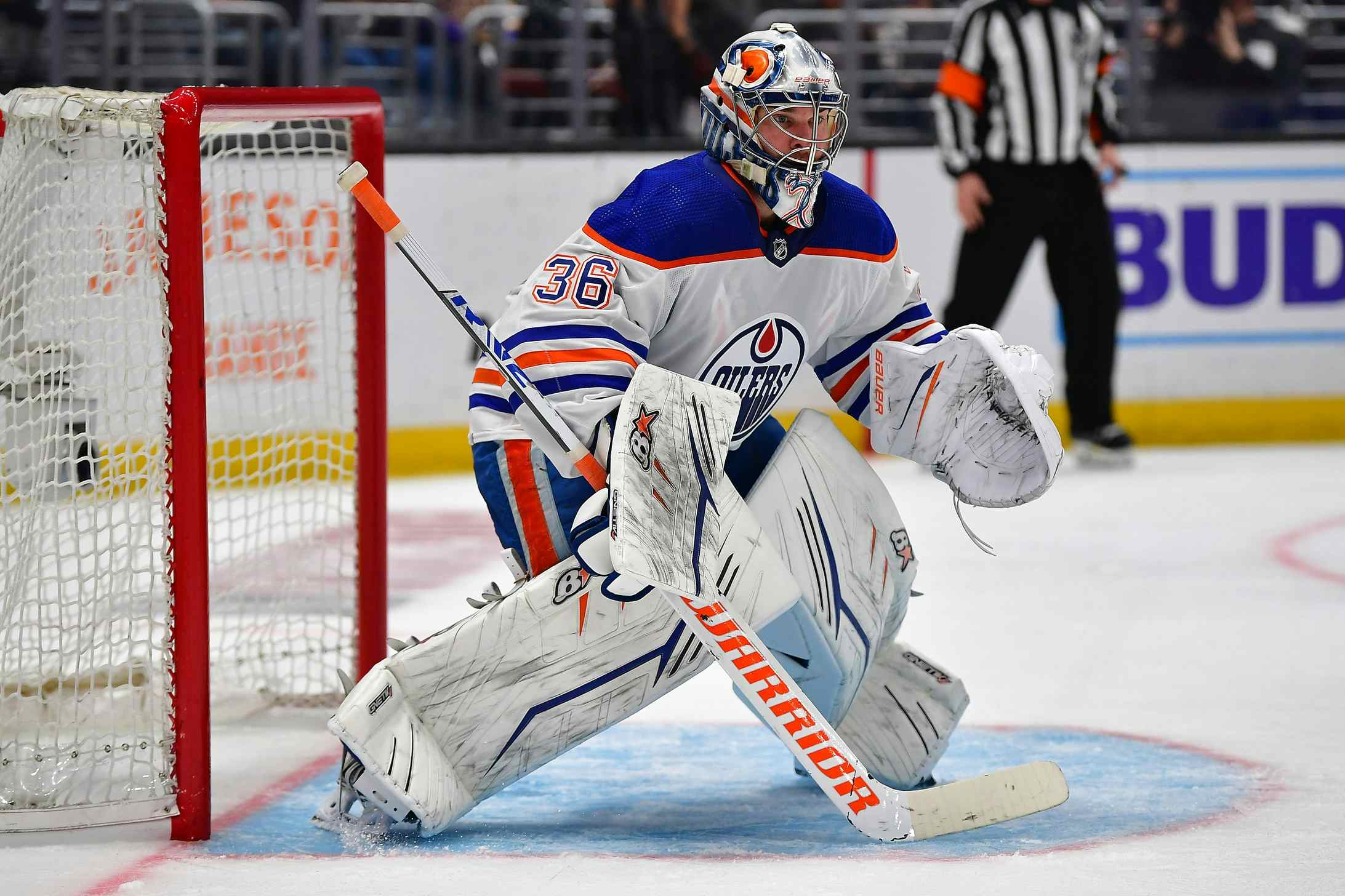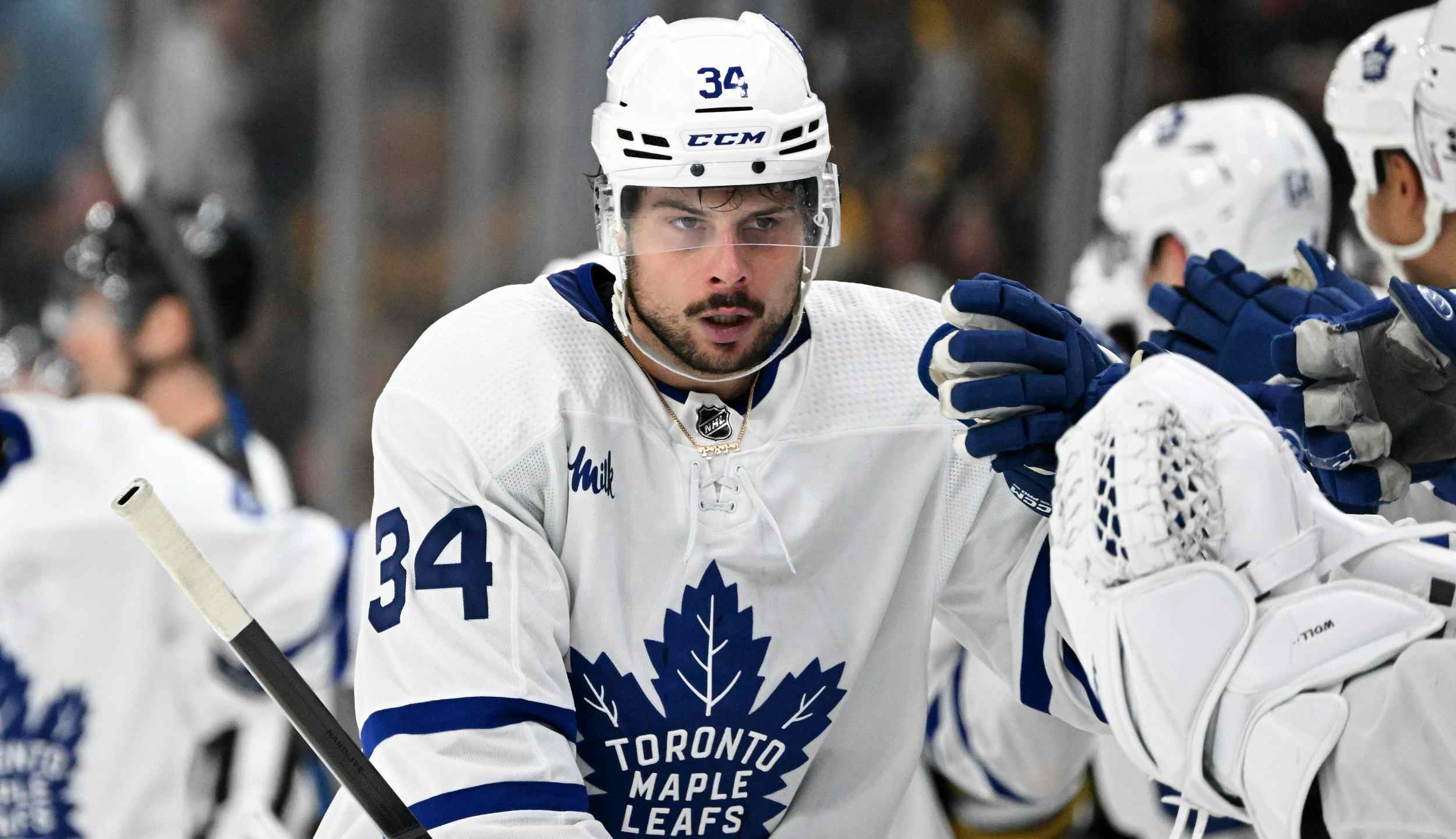Howson: Discusses his role and Individual Player Development Plan
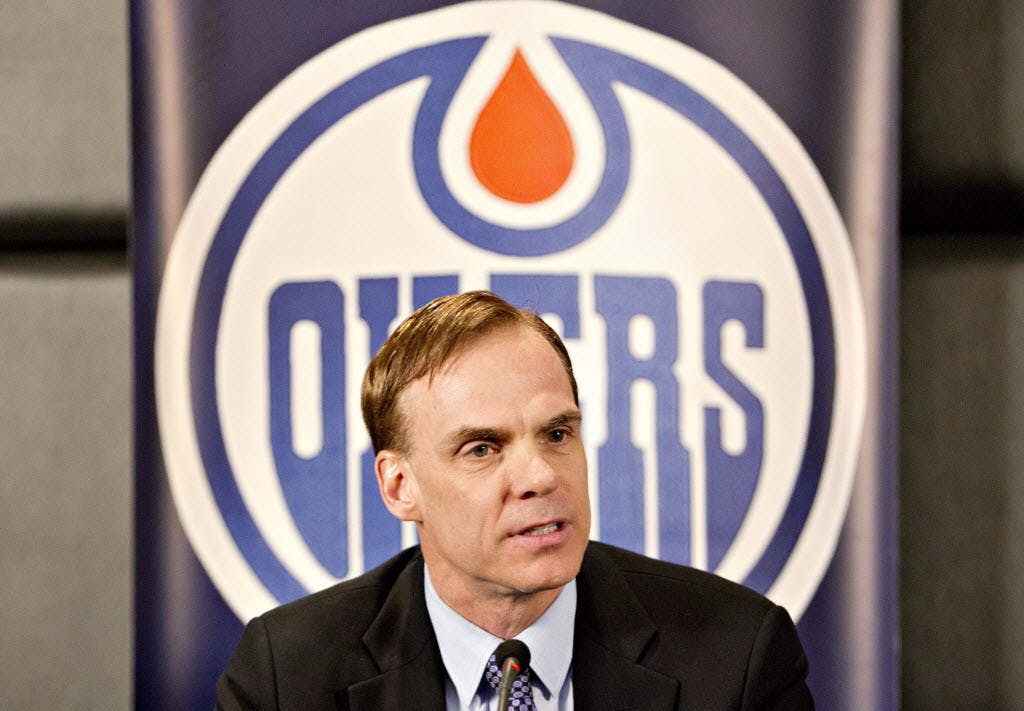
By Jason Gregor
4 years agoThe draft is the first step to building a consistent NHL organization, but how you develop, support and nurture those draft picks is arguably more important. The Oilers haven’t drafted or developed good enough for the past 14 years. The NHL standings prove that, but over the past four years the drafting has improved, and I sense their focus on development has too.
Until we see a steady stream of drafted players, outside of the top-ten, skating for the Oilers, then the doubts about who they draft and how they develop them will still linger. But I’m seeing signs it is changing.
Tyler Benson, Caleb Jones, Ethan Bear, William Lagesson, Dmitri Samorukov, Kirill Maksimov and Ryan McLeod are at varying stages of their development, but all are showing signs of NHL potential. Bear has played 18 NHL games, Jones 17 and Benson will push for a roster spot this year. Samorukov, Maksimov and McLeod are poised to turn pro and make their AHL debut. History and opportunity suggests they won’t all become NHL regulars, but for the first time in decades the Oilers look like they actually have numerous legitimate prospects.
It is a welcome change.
Much of the development will be on the players. They have to put in the work in the off-season to improve, and most do, but with proper direction, support and encouragement their odds of making it to the NHL improve.
Scott Howson is the VP of player development. I spoke with Scott on my radio show earlier this week to discuss his exact role. We also discussed the individual player development plan they have in place for each prospect.
Jason Gregor: As the vice president of player development, your exact job is you communicate with all Oilers prospects who are playing in the CHL, NCAA and Europe, or do you still go down to Bakersfield during the year and talk with rookies in the American League?
Scott Howson: No, I didn’t do much of that this year. We had 20 players playing outside of our system. You name the leagues, there’s tier two in the US and Canada and then College, Junior and Europe. Those are the guys that I dealt with on almost, for sure on a weekly basis, but sometimes on a daily basis.
Gregor: So are you getting film of all of their games and then you watch it and break down tendencies of their game?
Howson: I get some film, but it’s mostly live viewings. I try to see them play live. The Europeans are obviously a little harder, I went over twice this year, but I talk to them every week. The film work is more when I would get film on their games, then I would send it to them and we would go through the game. But it was mostly live viewings and communication through text, by phone or by email.
Gregor: It is important for players to feel like the organization cares, and you are monitoring their progress and setting out goals, I would think. How much of your job is about working on the mental part of the game as much as the physical side?
Howson: Well there’s a lot of the mental part. You know, they’re young men and they go through ups and downs and they have successes and failures. You hit the nail on the head there when you said that you want them to feel like they’re a part of us, that somebody cares, that somebody is watching and we’re there to help.
So it’s really two fold: that we care and we’re there to help them achieve what they want to achieve. And sometimes those are hard conversations and sometimes those are pats on the back when a guy is down or whatever or encouragement.
For example, I didn’t say much to Dmitri Samorukov in the second half of the season, because I mean you couldn’t play much better than he was playing. So we would just touch base once in a while. It all depends on the player. You get a read on the player, what they need and how they react to your advice, your comments. It varies between the players.
Gregor: Is this week an opportunity, especially with the players that you just drafted, to maybe have a lunch with them and get to know their personalities so you find out how to deliver your message. I’m assuming how you speak with Samorukov might be different from how you talk to [Evan] Bouchard or [Philip] Broberg?
Howson: Yeah, you’re exactly right. You get to know them, you get to know them a little bit this week. But this week is hard because there are so many of them.
I’ve had numerous conversations with Philip and Matej Blumel, and Tomas Mazura I talked to yesterday, meeting those guys for the first time. But it’s more the sort of the weekly conversations that you have and you really get some insights into what makes them tick and how they’re doing and how they’re going to handle adversity and all of those things that all human beings go through.
PLAYER DEVELOPMENT PLAN…

Gregor: When you look at Bouchard’s season last year, having watched him up close a lot, what did you like about his year and what things did you encourage him to continue to work on?
Howson: We go over things in the summer (last summer). We go through a sort of a, we call it an individual player development plan for each player. And with Evan there were a couple of things that stuck out, three things really. It was his retrievals — he was slow going back for the puck. His pace of game had to increase and his battle level had to increase in his own end in battles, particularly in the corners, not so much in front of the net.
What I was pleased with was that he won almost all of his battles at the junior level. He’s a strong guy, he’s a tall guy, and he was able to push people off of the puck. I think many people sort of don’t think of Evan Bouchard as engaging in a battle and pushing somebody off of the puck, but he could do that amongst his peer group and I was really pleased with that.
His pace of play was a challenge, he’s got, we all know he has excellent hockey sense and he just doesn’t have to play with big pace to be successful at the OHL level. His pace obviously got a little better, there was more urgency in his game when he got to Bakersfield, so that was good. His retrievals, they got marginally better. He just doesn’t have to push himself as much as we would like him to push himself at that level. So there’s still work to be done with Evan. We’re excited about him, we think that he’s going to be a very good NHL player. When that is, we’re going to have to find out.
Gregor: You said Samorukov couldn’t play much better than he did in the second half. He really took off when they traded [Ryan] Merkley and he got a bigger role. Were you a bit surprised at how dominant he became in the second half?
Howson: Well I really was. I mean we went through a process with Dmitri. He sort of fancies himself as an offensive defenseman, a power play guy, and they had Merkley there, and I don’t know if your listeners know, I’m sure you know, but he’s a very talented player. And so Merkley got all of the power play time in Guelph. And that frustrated Dmitri a little bit.
George Burnett (head coach) and I had many conversations, and we had many conversations with Dmitri that he should you know, just buy into being a defender, a shutdown defender at that level and the offense will eventually come. And finally when he bought into that, which he did at the beginning of the year, he played better. He accepted it and he excelled at it really, and then Merkley gets traded in January and Dmitri’s offense exploded. I thought there was some blatant offense there, but he was dominant at both ends of the rink so it was great to see. I didn’t expect that explosion of offense. I think you could argue that he was the best player in the OHL in the playoffs.
Gregor: Ryan McLeod is eligible to go to the American League. He has played four seasons in the Ontario Hockey League so I would think there is a good chance he will turn pro. What was in his individual scouting report that you guys wanted him to work on and did he achieve those?
Howson: Yeah two things stand out to me with Ryan. One was he became a more reliable, responsible player in his own end. He had a tendency to swing away from the puck, not support his defenseman with low routes, always looking for easy ice to break out of the zone with. And he changed that, he really did.
The trade from Mississauga to Saginaw helped him again because he was playing such important games down the stretch with Saginaw and into the playoffs. So he really became a reliable 200-foot player and his defensive game improved dramatically is what I would say over the year. The other parts we wanted him to improve on was to get more competitive on the puck and play on the inside of people more and there were some improvements there, but not as much as there was in his 200-foot game. So that’s an area that we’re going to continue to push on him as he’s likely headed for Bakersfield, he is going to turn pro this year. He’s got to get just a little stronger on the puck, win some more battles and get on the inside of people.
Gregor: Kirill Maksimov can really shoot the puck. What did his individual analysis look like? What areas did you did you want him to improve on throughout the year?
Howson: He’s a really intriguing guy for us. If his shot is not NHL caliber right now, it is very close. His release is really good, he gets it off of his stick quickly and there is a lot on it. I call those players one shot scorers. He only needs one shot to score and that continued this year.
When he was drafted I was told by our scouting staff that his skating needed to come. I think it still needs to improve, but it was much better than I was led to believe. And it’s improved over the two years. We had David Pelletier (Oilers skating coach) in Niagara working with him on occasion and he’s taken it upon himself to become a better skater. And that often happens just as kids get stronger and more mature. The other area of his game, he’s got a real edge to him; he gets under other people’s skin, he’s a borderline dirty player, the splayed hips and what not. We had a long talk about that, and didn’t want to take away his edge, but told him that he was a bit of a target for the referees.
I was at a game in 2018 where he had a bit of a late hit and the guy’s head went into the wall and he got suspended. He didn’t need to hit the guy. It’s one of those plays where the puck was gone.
We asked him to pick his spots a little better, but still have that competitive edge and he did. He was better and it was too bad he got hurt. I mean two games before the playoffs started and he missed the whole first round and tried to come back in the second round but really wasn’t effective. And then Niagara was a team that completely loaded up for a playoff round and it was too bad they only lasted two rounds. Maybe Kirill was part of that, that if he had been healthy he might have helped to push them through.
Gregor: The saying is you’d rather have to tame a stallion than whip a donkey. And in the case of Maksimov, if he’s got a little too much edge you’d rather have that because you can tone it down a bit rather than ask guys to play with more of an edge.
Howson: Yeah. I mean (laughs) we’re glad that that’s a part of his DNA and I think it’s going to serve him well. He just has to understand when it’s appropriate. And it’s really effective because he’s pretty competitive and he’s got people looking the other way sometimes and not concentrating on what they’re doing. It’s kind of rare for a player with his skillset to have that type of edge.
Again, he’s intriguing for us. I think he, like Ryan McLeod, is going to start in Bakersfield and we’ll see where it goes.
OTHER SCOUTING…

Gregor: Scott, when you’re out evaluating and watching your 20 prospects who are all across the globe, are you scouting for the 2019 draft class, are do you just focus on Oilers prospects?
Howson: I’ll know which players are draft eligible in the game, and if I see something, for instance on Kirill’s team there was Philip Tomasino. I didn’t file a report every game on Philip, but if I saw something that I liked, or didn’t like, I certainly wanted our amateur scouts to know about it. I’m more focused when I go to Niagara that on the four or five other drafted players and I try to do reports on those guys. The guys who are already drafted kind of get lost, they got drafted and then people lose their focus on these players, and then they turn pro and it kind of picks up again. So I like to just get a good read on some of those drafted players more so than the draft eligible players. The draft eligible players for instance Tomasito in Niagara, we have lots of reports on him. And I’d only put in a report if I saw something unique that game, or something really good or bad.
Gregor: What about if you have to give a report on a goaltender? Is it difficult to accurately analyze a goalie?
Howson: I think it is for most people. You certainly know when the guy is having a good game, or whatever. And you’ll put that in your report. I’ll give you an example. In Saginaw there was an Arizona pick Ivan Prosvetov. I thought he was one of the best goaltenders I’ve seen at that age, this year anyways. I made sure that I put the reports in on him.
But as far as analyzing, you can tell if he’s a good athlete, you can tell if he has good size, you can tell if he’s out and cutting down angles, you can tell if he’s got good depth or attracting the puck well, but as far as the real technical parts of it, I don’t have the expertise to analyze that. If there was something I need to see more of then I would ask our goaltending coaches to look at it on film or go and see him.
Gregor: That’s totally fair. I appreciate the honesty. Evaluating goalies is very difficult. Finally, what is the goal of the development camp this week for the group of prospects collectively?
Howson: If we fast-forward five years from now there are probably four or five players on the ice that are playing in Edmonton, and we want them to get to know each other and get to know us a little bit, and also get to know the city and feel comfortable here.
So this development camp is really small. We only have 21 players, which is smaller than most teams and our focus is really emphasizing skill development, skill and fitness. Most of the drills will be skill oriented and not as much about being evaluated.
Nobody is making the Oilers this week and they’re not being evaluated. We want them to learn, maybe some skills, certainly learn about fitness. This morning we had our strength and conditioning coach, Chad Drummond, talk about sleep and nutrition and all of those things. We want them to get educated. That’s what this camp is really about.
PARTING SHOTS…

I appreciated Howson outlining his specific role and how the organization goes about helping their young drafted players.
How will Samorukov, Bouchard, Maksimov and McLeod adjust to pro hockey? No one really knows. How will they deal with the challenge of playing against men, the quicker pace, the tougher battles, living on their own and the inevitable slumps that occur at the pro hockey level? They likely have never experienced the latter before, and how they handle that adversity and battle to maintain confidence will go a long way in determining what type of pro players they will become.
An individual player development plan is great, and I’ve been told it is more in depth than what Howson outlined above, but I still think NHL teams in general can do more to help with the growth and development of their players. I still think they’re lacking when it comes to a dedicated skills coach. I’d have one for left shooters and right shooters. Adam Oates, who is a skills coach for many of the elite scorers in the NHL, told me he needed to hire a left shooting skills coach to ensure some left-shot players had a better understanding of what they were teaching.
As the NHL evolves, I’d look at putting more emphasis on skill development and ensure I hire qualified skills coaches.
Recently by Jason Gregor:
Recent articles from Jason Gregor

